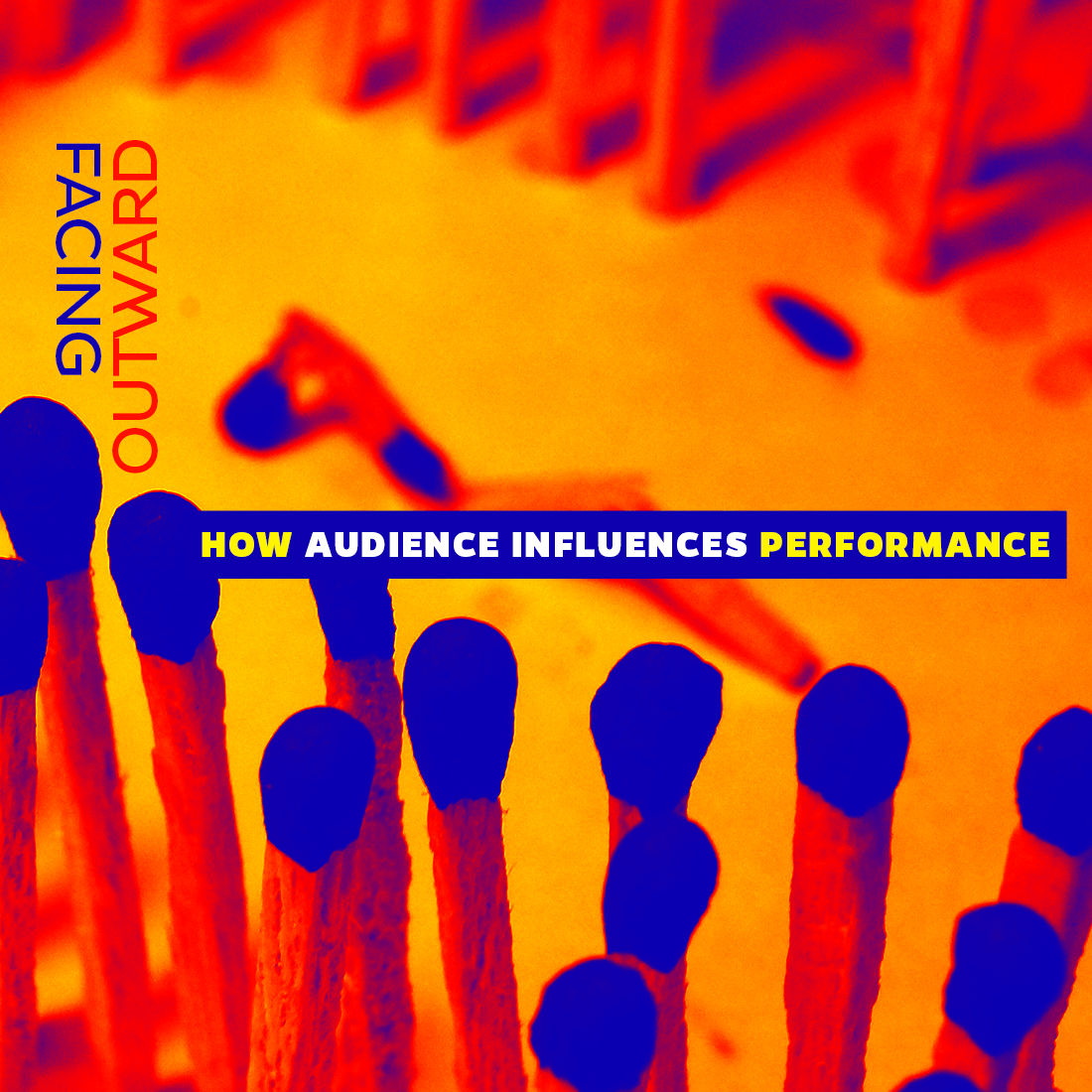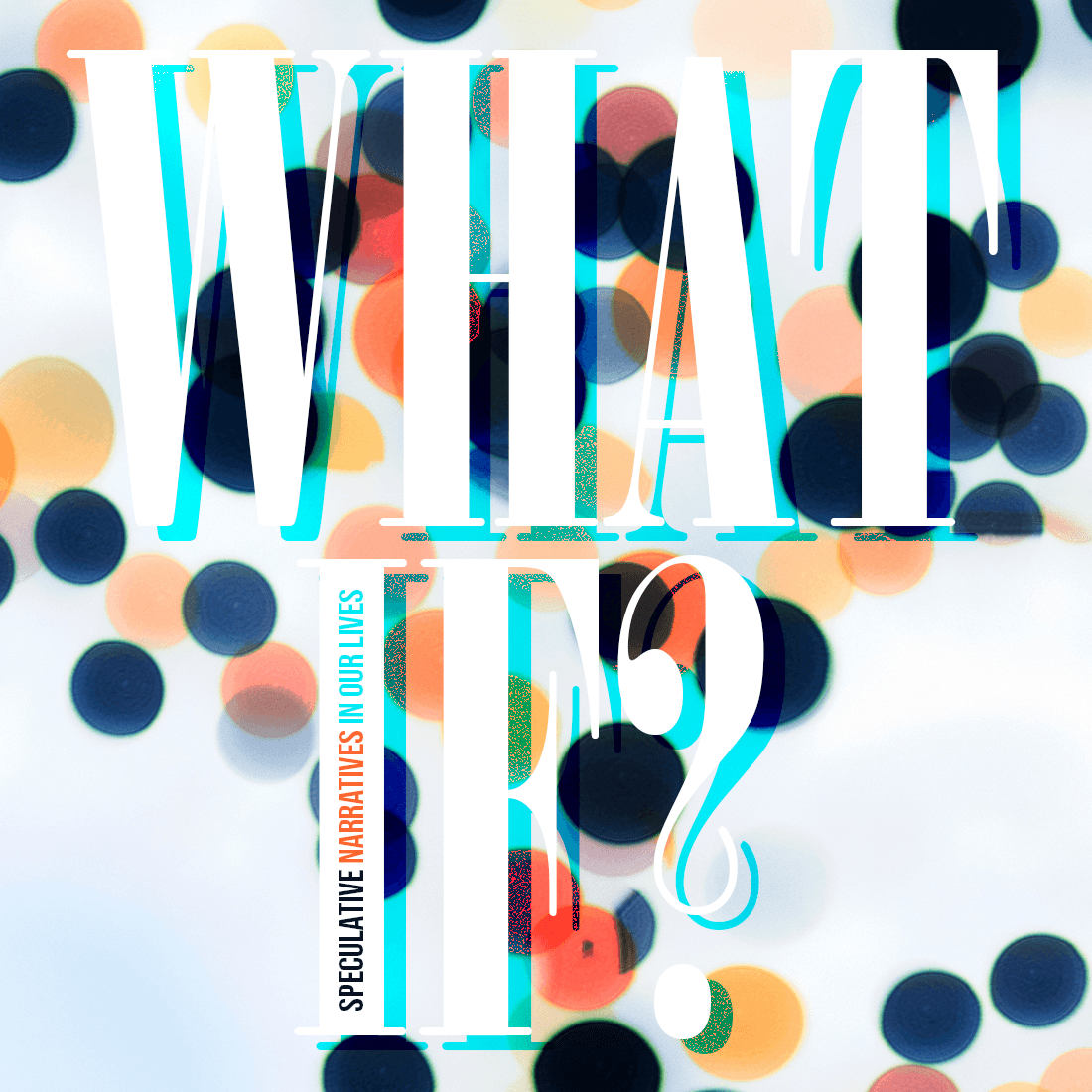CHAD MINOR
WTF is Bitcoin? At this point I think it’s safe to say that we’re all tired of having people mumble different explanations at us. That guy or gal — ha, I’m sorry, guy — who bought cryptocurrency two months ago and now won’t stop talking about how everything needs to be decentralized. And that’s all well and good — tech nerds are going to be tech nerds — but, at some point, you have to wonder what infected all of our friends, where once upon a time, they used to tweet about tons of stuff, and now its just “crypto, crypto, crypto.”*
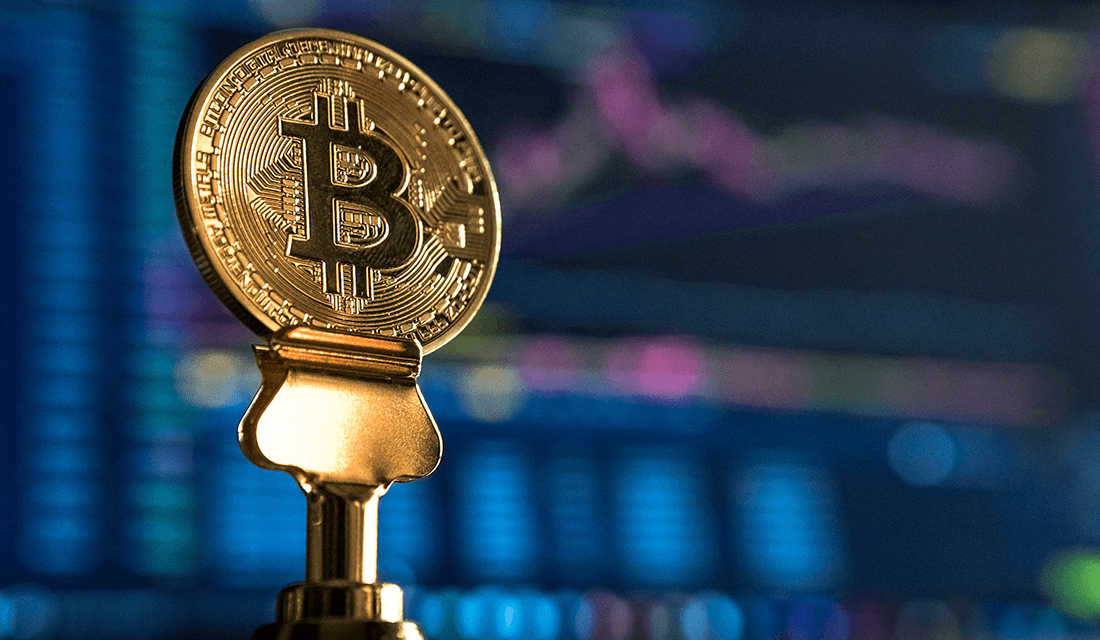
If you asked one of these pod people, there would be some explanation about how the technology is really impressive, how Vitalik is a genius, with even more explanation on how they’re really intrigued by what RaiBlocks is doing and think it’s the next big thing. Then, they’d make some allusion to their earnings — a little subtle wink, pretend to be the richest man in Qarth — and at that point (god be merciful) you’d switch the subject to where to buy the freshest raw meat.
It’s unsettling in its speed, but what we’re watching is a societal hallucination jumpstarting right in front of us, with a mass movement of people trying to perform the right rituals to establish something as being valuable. All of the actions are, in one way or another, signaling to establish an illusion as being the real thing. So, come on down the rabbit hole to where “fiat” is a slur and the revolution will not be centralized.
* If you’re one of those diehards for whom “crypto” means cryptography, look, the fight’s over, the mob has spoken; crypto will forever be that thing that got a currency based around cute dogs a two billion dollar market valuation.
Genuinely ask yourself why do you care about whether you have a dollar. Ask yourself this question in the same way that you might ask yourself while slightly stoned, boggling at your hands. Look at the little words written on this green piece of paper, signed by some guy you never met. It’s materially indifferent from the piece of paper in the printer next to you, yet if I were to rip a one dollar bill right in front of you, you’d wince.
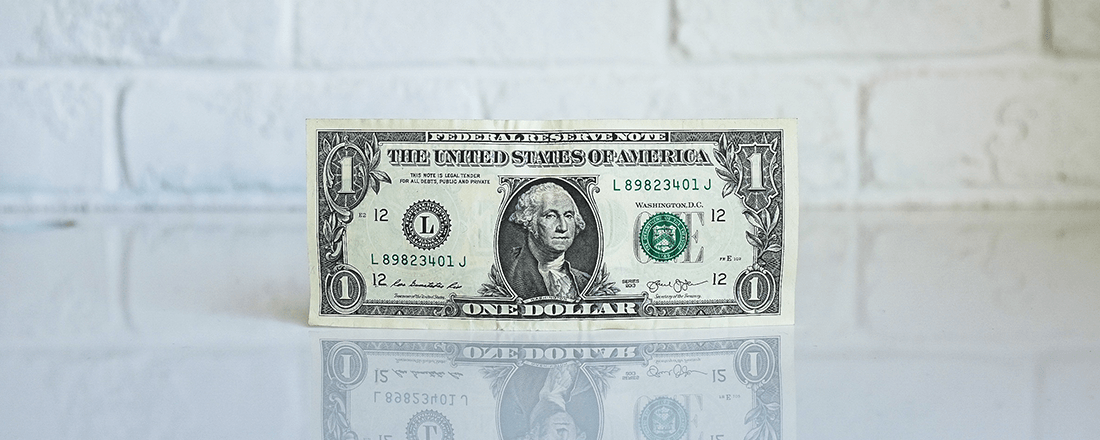
How did paper and gold originally get their value? Once upon a time, some people wanted a thing — the shiny metal from the ground — and other people wanted food, and they bartered. If you knew that group A was willing to trade 10 bushels of wheat for this rock, then group B should be willing to trade up to 10 bushels — minus the cost of carrying it over to group A, of course — in order to obtain the rock and get it to group A. So, maybe, group B traded with group C 9 bushels for the rock. And slowly, over hundreds or thousands of years, that knowledge passed on to others and it became accepted — it became trusted — that a certain type of rock could be traded for x number of bushels. Even now, when decking yourself out in gold is not really that common of a fashion trend for modern day kings, we know that gold has value.
The perception that something is a certain type of thing creates the associated value. Public rituals elevate this into a common knowledge.
This type of trust is a set of shared beliefs in what we think other people believe. As notable historian Yuval Harari says:
“Trust is the raw material from which all types of money are minted. When a wealthy farmer sold his possessions for a handful of gold coins and traveled with them to another province, he trusted that upon reaching his destination other people would be willing to sell him rice, houses, and fields in exchange for the gold. Money is accordingly a system of mutual trust, and not just any system of mutual trust: Money is the most universal and most efficient system of mutual trust ever devised.”
– Yuval Harari
It took many generations before the idea of gold as intrinsically having value — something that people would trust — sunk in around the world. Enough time to not be able to remember a world before gold having value existed.
But as every dime store, Medium thought-leader knows, the Internet has made everything move faster, and we don’t have the luxury of waiting three generations to forget about a pre-Bitcoin world.
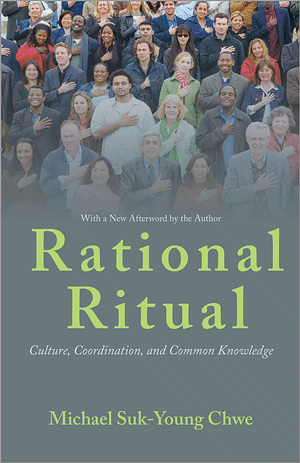
Source: © Michael Suk-Young Chwe
In his book Rational Ritual, political scientist Michael Suk-Young Chwe posits that the purpose of weddings, funerals, and Super Bowl ads are to create common knowledge. If you know that everyone thinks people who drink Dos Equis are cool (stay thirsty, my friends) then, even if you dislike the taste of Dos Equis, you might end up drinking it, because you know that other people will think you’re cool. And if you enjoy the sweet, smooth taste of Natural Light, but know (or are even concerned that maybe it’s the case) that people will look down on you for drinking Natty, you’d avoid it. The perception that something is a certain type of thing creates the associated value. Public rituals elevate this into a common knowledge. An ornate performance, done in view of a large number of people, means a bunch of people have not only seen and learned something, but, even more importantly, have seen other people seeing it. So, even when you’re sure Natural Light is a great way to go and forget Dos Equis, you know other people won’t feel the same way, and you behave accordingly.
These public rituals — the extremely loud and bright displays that other people witness — can establish knowledge that something has value, even if that thing is a bunch of 1s and 0s.
Turning back to technology, the idea of Bitcoin mining is to solve a complex puzzle and get a reward. This has genuine technological benefits — for example, it secures the Bitcoin network from attack — but it has sociological benefits as well. In the early days, it was random people who were buying computers to start mining. They were investing real money into solving arbitrary puzzles on the Internet, which will in turn arbitrarily give them tokens if they were successful. They wouldn’t just give those tokens away for free, though, due to the time spent on them. Meanwhile, others wouldn’t want to create their own tokens; they’d want to buy new ones from other people.

Bitcoin Mining Farm in Iceland | Source: Marco Krohn/Wikipedia (CC-BY-SA-4.0)
Now, you have to invest millions of dollars into getting competitive equipment created specifically to generate Bitcoin. If you saw someone burning millions of dollars in order to pull something out of the ground, you’d reasonably think that that thing had value. And, in a system predicated on trusting that an ethereal thing has monetary value in relation to a bunch of other physical things, the clearest way to communicate that is by inextricably tying money, hardware, and time together in a very public display.
[What] we’re watching is a societal hallucination jumpstarting right in front of us, with a mass movement of people trying to perform the right rituals to establish something as being valuable.
A ritual of sacrifice is powerful. Historically, human sacrifice was intrinsically tied to religious sacrifice — with this idea of inviting fortune and taming the gods. These days, people are too sophisticated to just kill goats to prove that their god is valuable. Now it’s about building giant temples to show it, and building the culture to perform within these temples.
On that note, Bitcoiners really love their memes.
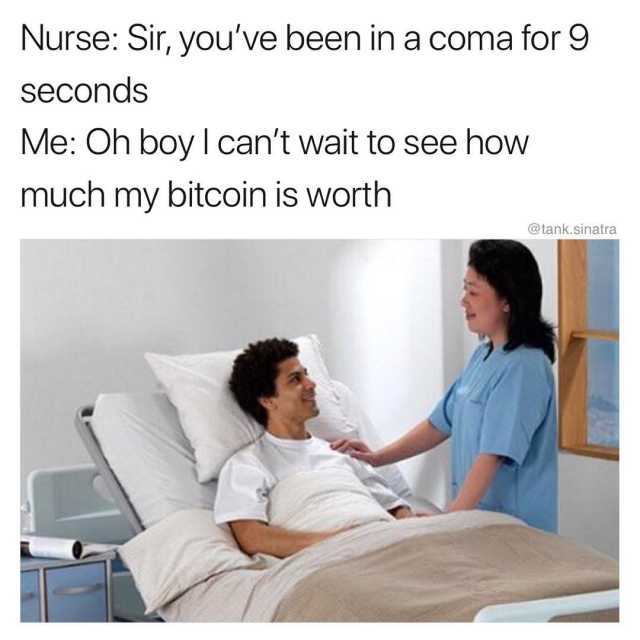
Source: Bitcoin.com
There are memes for certain prices, memes for embracing the idea of Bitcoin, memes for shit talking people without coins (appropriately known as “nocoiners”). A meme — in the colloquial sense, and not in the Dawkins sense — is an in-joke among a group of people. The absurdity of the My Dude Frog meme is great not on its own, but in the knowledge that there are tons of others who are viewing this and millions of others who wouldn’t get it at all. It’s a shibboleth that tests whether people are actually part of the group, and act as a means of establishing common knowledge among the group — that, yes, something is here.
And it all communicates an aesthetic. Why this particular cyberpunk fantasy of no trusted intermediaries, of smashing the banks through the mystical arts of deep math? The same reason why corporate-appropriated art will always suck and the edges will always be where the cool is. And, for the same reason, the suits will come in — the hucksters and scammers and VCs — and turn it into another jeans-and-suit-jacket-wearing mid-tier executive who sleazily jokes about his wild youth at Burning Man.
[In] a system predicated on trusting that an ethereal thing has monetary value in relation to a bunch of other physical things, the clearest way to communicate that is by inextricably tying money, hardware, and time together in a very public display.
Sorry, this was actually the normiest thing to do ever, to try and explain Bitcoin. Watch this video instead of Vegeta freaking out because Bitcoin’s value hit $9k last year.
Bitcoin’s value hit over $9,000 in late November of 2017, and people freaked out | Source: HODLkev/YouTube
I guess what I’m saying is none of this makes sense. It doesn’t make sense that we exchange little pieces of paper for things, and it doesn’t make sense that everyone is rushing to create a new cryptocoin — it’s all a collective hallucination. A collective performance to establish value. But those performances hold society together, and occasionally help you come up with new ways to buy drugs or Tamogatchis online.
It’s all a ritual, a complicated thing that we enact and do in order to make something that ordinarily would have no value — random 1s and 0s that some teenager hacker gave us — seem like it has value by virtue of scarcity. The reason I know I can send this specific string of 1s and 0s to someone on the web and they’ll give me drugs in return is because there’s a limited amount of it, and it enables a costly performance — costly to the tunes of billions of dollars of CPU and electric power — that simulate a costly activity. Because a certain core set of people are willing to perform costly acts to show that it has value, we non-core set of people can trust that it is valuable.
What I’m really, really saying is buy bitcoin.
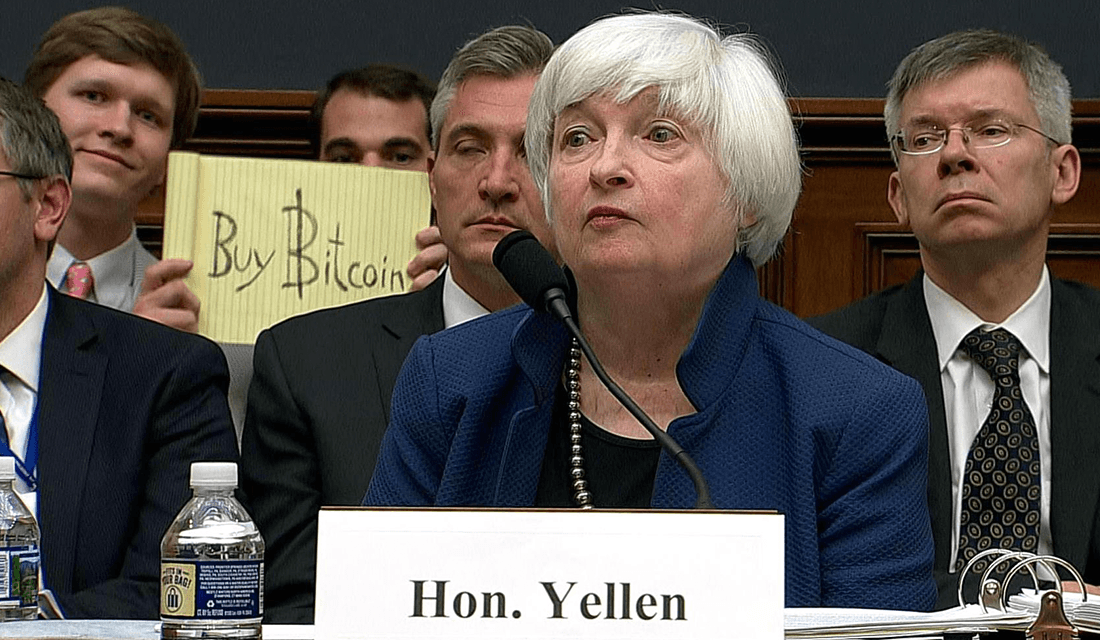
Somebody holds a “Buy Bitcoin” sign during Chair of the Federal Reserve Janet Yellen’s congressional testimony in 2017 | Source: © CNBC


